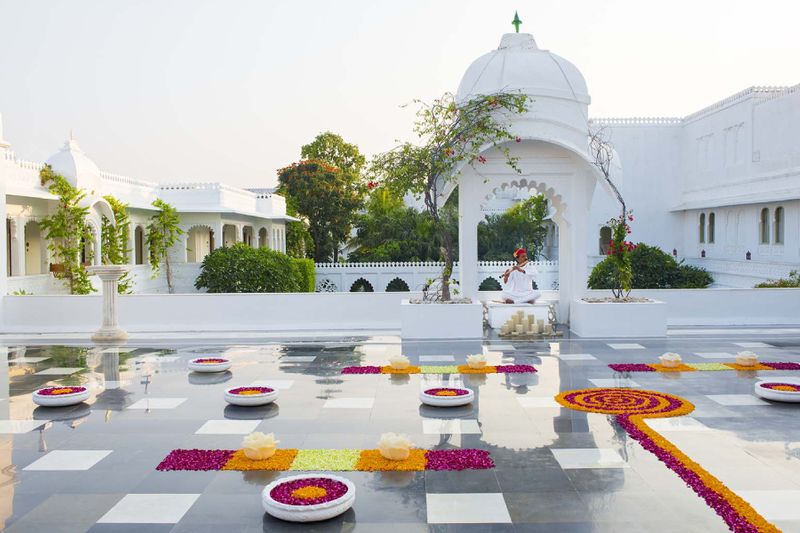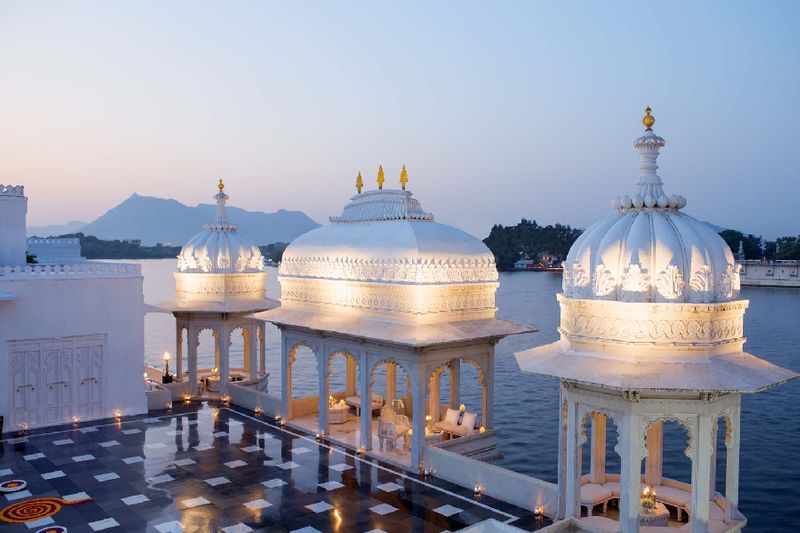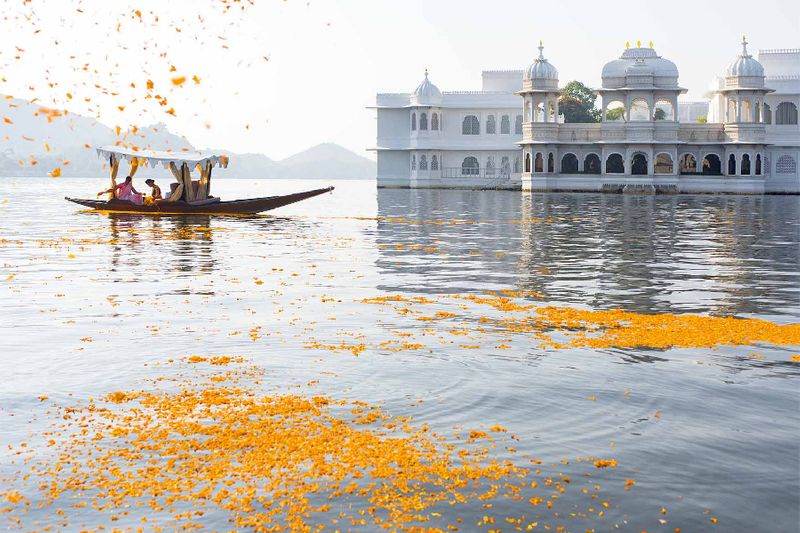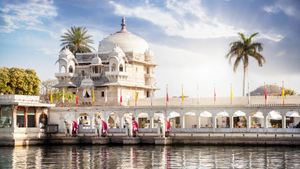Snapshots
Travel sets your soul free — or packs your suitcase with a montage of unforgettable experiences. Let’s say I experienced a mix of both (or more) when I recently embarked on a trip to Udaipur to get a taste of royalty. If you are someone who believes in ‘first impressions’, brace yourself to get swept off by the city’s beauty.
Crystal-clear lakes, charming structures, and royal cuisine make this city a hotspot on the tourist radar. But what stands out is how the city lives up to its reputation of being one of the most hospitable in the world. Walk along its alleys and cobbled streets, only to find locals dressed in colourful attire greet you with khamagani. Sounds like music to the ears, we promise!
An array of structures dot Udaipur, with several of them whispering secrets of its antiquity past. The ‘jewel in the crown’ is undoubtedly Taj Lake Palace, which has stood the test of time. Today, it serves as the ‘true’ bridge between the past and the present. During my stay at the Mayur Mahal suite, the staff at the hotel warmed the cockles of my heart with fables that transported me to the yesteryears.
Legend and lore of Jag Niwas

The magnificent edifice that floats like a feather on the crimson waters of Lake Pichola houses history's best-kept secrets; some of which will make you squeal in excitement. A rich account of the hotel by historian Sharada Dwivedi highlights how this structure was borne out of rebellion by Maharana Jagat Singh II against his father (the then ruler) who discouraged him from rallying around with the ladies of his zenana on moonlight picnics on the neighbouring island palace of Jag Mandir.
The words of his father "build your own palace" pierced through Maharana Jagat Singh II's ears, coercing him to construct Jag Niwas — known as the Taj Lake Palace, Udaipur today. The foundation stone was laid on May 4, 1743 — the royal inauguration happened much later, on February 1, 1746.
The water palace was like no other — no wonder, the 19th-century historian, civil servant, and traveller, Colonel James Tod, was stumped by its unparalleled beauty. Here's what he wrote in his magnum opus 'The Annals and Antiquities of Rajasthan', "Nothing but marble enters into their composition, columns, baths, reservoirs, fountains, all are of this material, often inlaid with mosaics, and the uniformity pleasingly diversified by the light passing through glass of every hue."
Today, it is hard to differentiate between the old parts and new additions — the palace that was once considered a summer retreat by the Mewar royal family now assumes the reputation of one of the world's most romantic hotels, offering breathtaking views of the neighbouring City Palace, Aravalli hills, Machla Magra hills, and Jag Mandir. The heritage structure that was converted to a hotel in 1963 has 65 luxurious rooms and 18 grand suites, bedecked with the finest decor and architectural elements. It has also gained prominence after featuring in cult Hollywood films like Octopussy and The Fall.
Striking a balance between the 'old' and 'new'

Much like his father, Maharana Bhagwat Singh (son of Maharana Jagat Singh II) realised the heritage structure’s potential to usher in tourism to Udaipur. That's when he decided to initiate its reconstruction. It all began with restoring the exquisite glass inlay panels followed by repairing the ground and first floors on the southwest side.
Interestingly, the old suites — including Sajjan Niwas, Sarva Ritu Vilas, and Khush Mahal — remain untouched. The additional rooms that were built struck the perfect balance between tradition and modernity.
It was during the time of renovation that Queen Elizabeth II arrived with the Duke of Edinburgh in 1961, followed by Jacqueline Kennedy and her sister, Princess Lee Radziwill, in 1962. Although they stayed elsewhere, they were enchanted by the beauty of the Lake Palace. These visits also reassured the royals that the palace had immense potential to woo tourists.

In spite of the Lake Palace opening its doors to tourists, 200 years after its inauguration (and on the same date), it suffered from several teething problems like irregular food supplies, erratic power, and mosquito menace. The roadblocks may have been a deterrent, but their hospitality was always a notch above the rest.
In 1971, the Mewar royal family made a smart business move — they handed over the management of the hotel to the Taj Group of Hotels. The Group had already established its credibility in 1903 when the flagship Taj Mahal Palace Hotel was built in Bombay by Jamsetji Tata.
The architectural marvel of Taj Lake Palace Udaipur

Take one look at the pristine white structure and you will be charmed in an instant. What's most heartening is how the Taj architects and the interior designer Elizabetha Kerkar ensured that there weren't too many nips and tucks, keeping the original aesthetic intact. Rare antiques and artefacts that belong to the royal family continue to dominate the decor today, adding an air of antiquity that is much appreciated.
The old palace was adorned with beautiful indoor garden courtyards, which are still very much a part of Taj Lake Palace. Lavish rooms have been added around the courtyard, with special attention being paid to avoid transgressing the external periphery. Old accounts suggest that the original rooms were decorated with stained glass panes; today, the palace is punctuated with similar glass that had to be procured and fitted in the new rooms.
The impeccably-done rooms and suites housed in the property offer an experience that is fitting for royalty — so much so that most of the elements in these spaces are original, and belong to the Mewar rulers.
If you are someone who is an avid history aficionado and loves a riveting story or two, make sure you partake in the Heritage Walk organised by the hotel. You will return richer — armed with a barrage of anecdotes that will transport you to the era bygone.
All in all, a stay at the Taj Lake Palace, Udaipur, is not just another hotel experience — it will paint your vision with myriad hues of royalty that will remain with you for a lifetime.


_1676872973177_thumb_1200.jpeg?w=3840&q=75)

